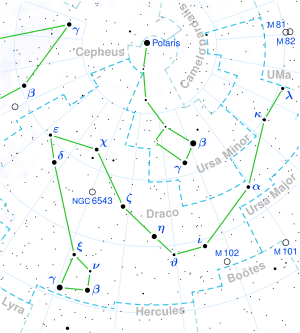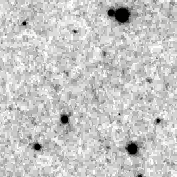
Van Maanen 2, or van Maanen's Star, is the closest known solitary white dwarf to the Solar System. It is a dense, compact stellar remnant no longer generating energy and has equivalent to about 68% of the Sun's mass but only 1% of its radius. At a distance of 14.1 light-years it is the third closest of its type of star after Sirius B and Procyon B, in that order. Discovered in 1917 by Dutch–American astronomer Adriaan van Maanen, Van Maanen 2 was the third white dwarf identified, after 40 Eridani B and Sirius B, and the first solitary example.

Ross 548 is a white dwarf in the equatorial constellation of Cetus. With a mean apparent visual magnitude of 14.2 it is much too faint to be visible to the naked eye. Based on parallax measurements, it is located at a distance of 107 light years from the Sun. It was found to be variable in 1970 and in 1972 it was given the variable star designation ZZ Ceti. This is a pulsating white dwarf of the DAV type that is the prototype of the ZZ Ceti variable class., pp. 891, 895.
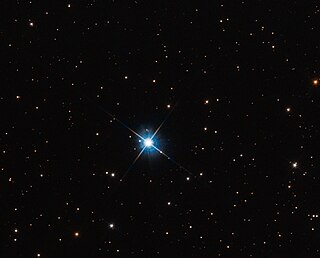
LP 145-141, also known as LAWD 37, is an isolated white dwarf located 15.1 light-years from the Solar System in the constellation Musca. According to a 2009 paper, it is the fourth closest known white dwarf to the Sun

Zeta Cygni is a binary star system in the northern constellation of Cygnus, the swan. It has an apparent visual magnitude of 3.26 and, based upon parallax measurements, is about 143 light-years away.
LP 658-2 is a degenerate star in the constellation of Orion, the single known object in its system. It has an apparent visual magnitude of approximately 14.488.
L 97-12 is a nearby degenerate star, located in the constellation Volans, the single known component of the system.

G 99-47 is a nearby degenerate star of spectral class DAP8, the single known component of the system, located in the constellation Orion. G 99-47 is probably the tenth closest white dwarf, followed by Gliese 293, Gliese 518 and Gliese 915.
Wolf 489 is a nearby degenerate star of spectral class DZ10.0), the single known component of the system, located in the constellation Virgo.
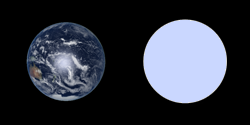
WD 2359-434 is a nearby degenerate star of spectral class DAP5.8, the single known component of the system, located in the constellation Phoenix, the nearest star in this constellation.
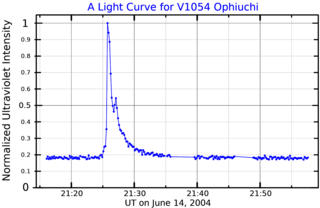
V1054 Ophiuchi, together with the star Gliese 643, is a nearby quintuple star system. In the constellation Ophiuchus at a distance of 21.19 light-years. It consists of five stars, all of which are red dwarfs. The alternative designation of Wolf 630 forms the namesake of a moving group of stars that share a similar motion through space.
SDSS J141624.08+134826.7 is a nearby wide binary system of two brown dwarfs, located in constellation Boötes. The system consists of L-type component A and T-type component B.
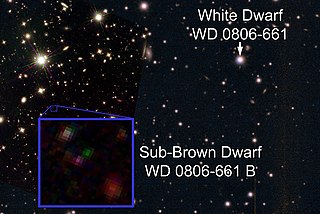
WD 0806−661, formally named Maru, is a DQ white dwarf with an extremely cold Y-type substellar companion, located in the constellation Volans at 62.7 light-years from Earth. The companion was discovered in 2011, and is the only known Y-type companion to a star or stellar remnant. At the time of its discovery WD 0806-661 B had the largest actual and apparent separation of any known planetary-mass object, as well as being the coldest directly imaged substellar object then known.
2MASS J03552337+1133437 is a nearby brown dwarf of spectral type L5γ, located in constellation Taurus at approximately 29.8 light-years from Earth.
GJ 3323 is a nearby single star located in the equatorial constellation Eridanus, about 0.4° to the northwest of the naked eye star Psi Eridani. It is invisible to the naked eye with an apparent visual magnitude 12.20. Parallax measurements give a distance estimate of 17.5 light-years from the Sun. It is drifting further away with a radial velocity of +42.3 km/s. Roughly 104,000 years ago, the star is believed to have come to within 7.34 ± 0.16 light-years of the Solar System.
WD 1337+705 is a star in the constellation Ursa Minor. Shining with an apparent magnitude of 12.8, it is white dwarf 0.59 times as massive as the Sun. It is 86.5 light-years distant from Earth. It has 3% of the Sun's luminosity.
Gliese 318 is a white dwarf in the constellation Pyxis. Its spectral type is DA5.5 and it has a visual magnitude of 11.85, and lies 27.8 light-years away. The star was too faint to have had its parallax measured by the Hipparcos satellite. Earth-based measurement in 2009 gave its parallax as 113.63 ± 1.97 milliarcseconds, yielding a distance of 28.7 ± 0.5 light-years; this parallax measurement has since been substantially improved by Gaia. It is around 45% as massive as the Sun but has only 0.15% its luminosity.
Ross 640 is a white dwarf star in the northern constellation of Hercules, positioned near the constellation border with Corona Borealis. With an apparent visual magnitude of 13.83, it is too faint to be visible to the naked eye. Its trigonometric parallax from the Gaia mission is 62.9″, corresponding to a distance of 52 light-years.
